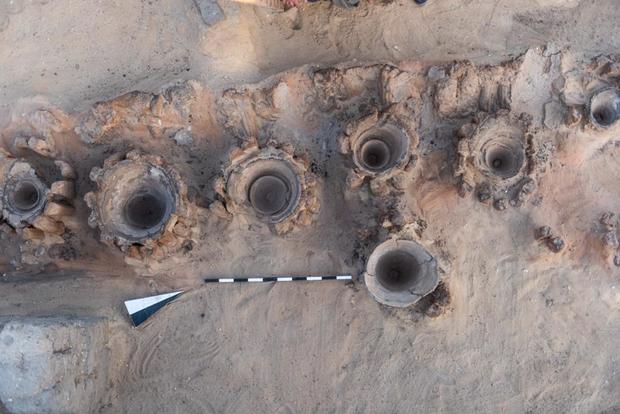Archaeologists working in Egypt have uncovered “what is believed to be the oldest high-production brewery in the world,” the Egyptian Ministry of Antiquities said Saturday.
East of the Temple of King Narmer in Abydos, the 5000-year-old site was relocated in 2018 using magnetic survey by archeologists from a joint Egyptian-American mission after it had been previously partially discovered and then lost again by British archeologists in the early 20th century.
CBS News contacted Matthew Adams, an archaeologist and research scholar at New York University, who is co-leading the mission that unearthed the brewery, to find out why and how ancient Egyptians were making so much beer.
This interview has been edited and condensed for clarity.

CBS News: When did your team start working on the site?
Matthew Adams: We began work in 2018 in the area where the brewery is located. A British archaeologist, T. Eric Peet, excavated there more than 100 years ago and published a summary report on finding large and enigmatic pyrotechnic features he interpreted as grain parching kilns (drying grain to prevent rot during storage).
In the years since, discoveries at other sites, particularly Hierakonpolis near Edfu and Tell el-Farkha in the Delta, where similar features were found, made clear that these related instead to the production of beer. Many questions remained unanswered from Peet’s early work, so we decided to investigate the area with the aim of gaining a fuller understanding of these very early features and what they are doing there.
Other ancient breweries have been discovered in Egypt. What makes this one unique?
The incredible scale of the beer production. We know of at least eight individual brewery structures, each one of which contained as many as 40 emplacements for large pottery vats that were used for the “mashing,” or slow-cooking, process in beer production. Each individual structure had a capacity larger than any other early site, and we estimate a total production capacity of more than 20,000 liters per batch.
That’s enough to give every person in a 40,000-seat sports stadium a pint. This is Egypt’s, and perhaps the world’s, earliest example of truly industrial-scale beer production.
The Abydos brewery illustrates the level of resources available to Egyptian kings from the very beginning of pharaonic history, as well as their ability to organize the specialist labor necessary. Both of these were absolutely quintessential aspects of Egyptian kingship for the rest of pharaonic history.
Why did they need to make that much beer?
This incredible scale appears to be directly related to other things Egypt’s first kings were doing at the site. Firstly, Abydos was their ancestral home.
King Narmer and his successors of the First Dynasty, as well as two kings of the Second Dynasty, built their tombs in Egypt’s first great royal necropolis at Abydos, which grew out of the cemetery of many generations of predynastic local rulers.
These same kings built monumental royal funerary temples, also called “royal cultic enclosures,” at the site, and we know that the rituals conducted in these monuments involved making offerings on a large scale, the same thing that was done in gods’ temples. These included, first and foremost, beer, with thousands of pottery “beer jars” found in and around some of the funerary temples.
It would seem, then, that in the north Abydos brewery, we have an industrial facility that could produce beer on this scale for royal ritual at the site.
What’s next for the site?
We aim to continue work there, in part to determine whether the eight structures represent the full extent of the facility or whether it may have been even larger.
